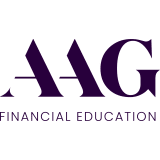This informal CPD article, ‘How to Build a Nest Egg for Your Children’, was provided by AAG Financial Education (AAG). Founded in 1995, they provide long-term, comprehensive, and bespoke financial education to their clients.
Raising children is one of life’s greatest joys, but it can also be a financial challenge. With the rising costs of living, including necessities like housing, education, and even daily expenses, it’s no surprise that parents may feel squeezed when it comes to saving for their children's future. However, starting a savings plan for your child's future doesn’t have to break the bank—it can provide them with an incredible head start in life and help ensure your family’s financial stability.
The Benefits of Saving for Your Child's Future
Every parent wants to set their children up for success, and building a financial safety net can be a key part of that goal. The good news is that saving for your child’s future doesn’t have to be a massive monthly commitment. By setting aside small amounts regularly and starting early, you can build a substantial fund over time. This approach can also instill valuable financial habits in your children, teaching them the importance of saving and planning ahead.
How to Start Saving: The Best Options
If you’re ready to start putting money away for your child's future, there are two main options to consider: Junior Individual Savings Accounts (Junior ISAs) and children’s pensions.
Junior ISAs: A Flexible and Tax-Efficient Option
A Junior ISA is a popular savings vehicle designed specifically for children. It allows parents, grandparents, and even friends to contribute, making it a flexible and straightforward way to save. The best part? Any growth within a Junior ISA is tax-free, which means you won’t pay Capital Gains Tax or Income Tax on the returns.
There are two types of Junior ISAs: Cash ISAs and Stocks and Shares ISAs. While a Cash ISA offers stable returns, a Stocks and Shares ISA can potentially generate higher returns over time due to compounding and market growth. However, it’s essential to consider the long-term nature of investments, as stock market fluctuations are a normal part of the process. The maximum you can contribute to a Junior ISA in the 2024/25 tax year is £9,000, and the funds are locked in until your child turns 18. At that point, they can either withdraw the money or convert it into an adult ISA to continue enjoying tax advantages.
Children’s Pensions: Planning for the Distant Future
While it may seem unusual to set up a pension for a newborn, starting early can yield substantial benefits over the long term. A children’s pension fund can be opened as soon as your child is born, and you can contribute up to £2,880 per year. With the added benefit of 20% pension tax relief, this amount increases to £3,600 annually.
Just like a Junior ISA, a children’s pension can only be set up by a parent or legal guardian, but contributions can come from anyone. This can be a strategic way for grandparents to reduce their Inheritance Tax liability by lowering the value of their estate, especially if the payments fall under the £3,000 annual tax-free gifting allowance or the exemption for regular contributions made from surplus income.
Though children won’t be able to access their pension savings until much later in life, starting a fund early means they can benefit significantly from compounding returns. Even small contributions made over the years can grow into a sizable retirement pot by the time they stop working.
Building a Financial Plan That Works for You
While the idea of saving for your child’s future may feel overwhelming, it doesn’t have to be. The key is to start early, save consistently, and choose a method that fits your financial situation. Whether you decide to invest in a Junior ISA, a children’s pension, or both, the important thing is to strike a balance between securing your child's future and maintaining your own financial well-being.
We hope this article was helpful. For more information from AAG Financial Education (AAG), please visit their CPD Member Directory page. Alternatively, you can go to the CPD Industry Hubs for more articles, courses and events relevant to your Continuing Professional Development requirements.













